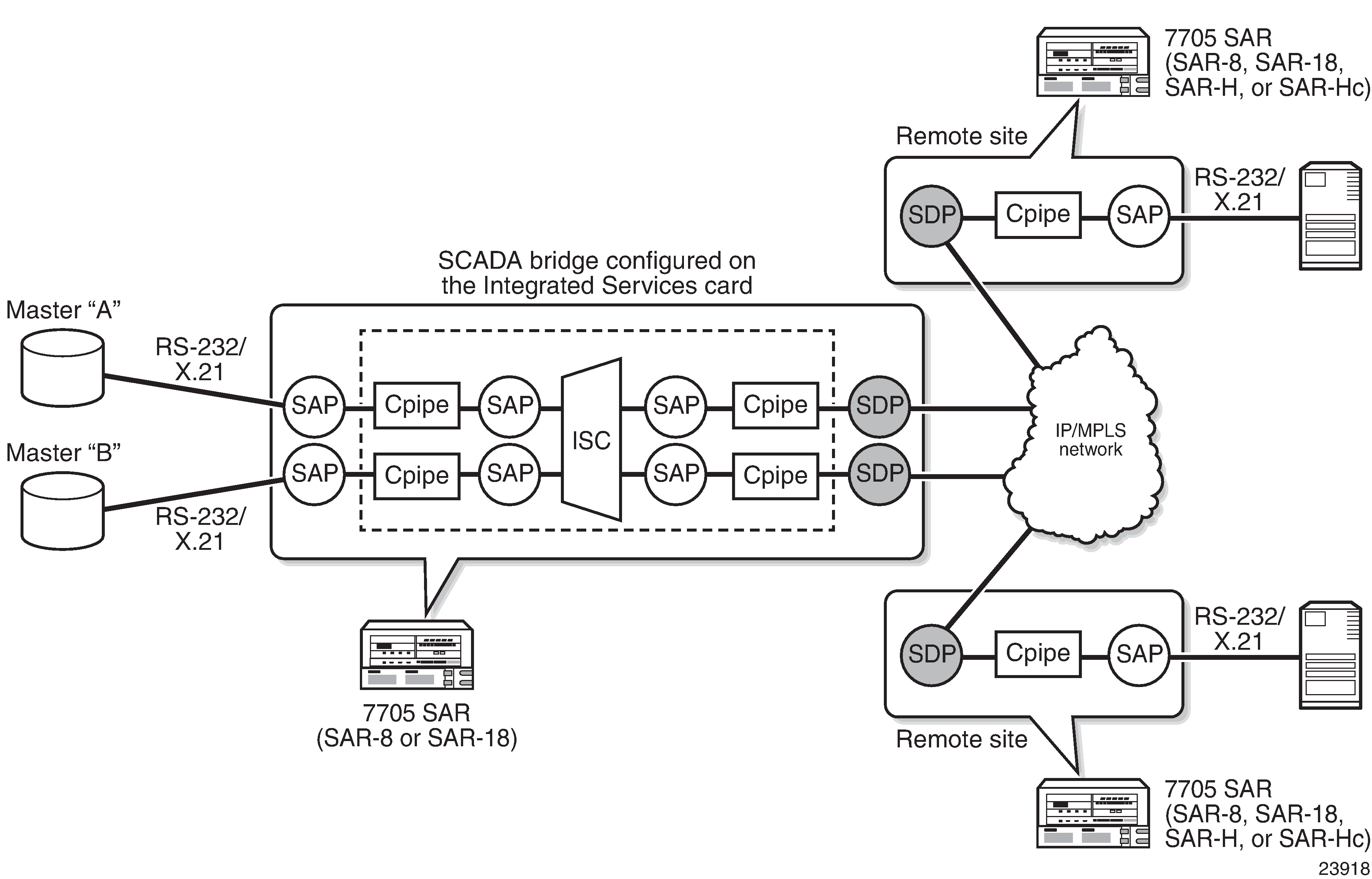The MDDB application provides a centralized digital bridging functionality that allows a SCADA bridge to be configured between a master and remote slaves. The bridge allows a single data message stream to be broadcast from a master to multiple slaves and allows a single slave to communicate back to the master.
In a SCADA network, the 7705 SAR provides the communications infrastructure to connect the central masters to multiple RTUs at remote locations, where the masters and RTUs communicate over serial RS-232, RS-530, or X.21 links (synchronous or asynchronous). The 7705 SAR-8 Shelf V2 or 7705 SAR-18 located at the master site contains the Integrated Services card, which provides the MDDB bridge functionality and acts as the MDDB master. Remote 7705 SAR nodes connected to RTUs are referred to as MDDB slaves.
For both master and slave applications, the 7705 SAR must be physically connected to the SCADA device by one of the following:
a 7705 SAR-8 Shelf V2 or 7705 SAR-18 using the 12-port Serial Data Interface card (supports RS-232, RS-530, and X.21 links)
a 7705 SAR-H using the 4-port T1/E1 and RS-232 Combination module (supports RS-232 links only)
a 7705 SAR-Hc using an on-board RS-232 serial port (supports RS-232 links only)
The 12-port Serial Data Interface card, version 2 supports the RS-530/RS-422 interface with the use of an adapter cable that connects to a DB15 connector on the front of the X.21 distribution panel. There is no configuration specifically for the RS-530/RS-422 interface; configuration is done in X.21 mode and applies to the RS-530/RS-422 interface when it is physically enabled through hardware. The 12-port Serial Data Interface card, version 3, provides RS-530 interface capability without the need for an adapter cable. For information about 12-port Serial Data Interface card adapter cables, refer to the 7705 SAR Serial Data Interface Card Installation Guide.
The remote nodes are connected to the SCADA bridge over an IP/MPLS network.
An Integrated Services card supports up to 16 SCADA bridges. Each bridge supports 32 branches. Two branches (branch 1 and branch 2) are dedicated connections to the SCADA masters; the other 30 branches connect to the slaves. An MDDB SCADA bridge is created using the config>scada bridge-id command and a branch is created using the config>scada>branch branch-id command.
Larger bridges can be built by cascading individual bridges internally within a single Integrated Services card and using the master output from one bridge as the slave input to another bridge. Larger bridges can be cascaded across multiple Integrated Services cards by using an RS-232, RS-530, or X.21 link.
Figure: SCADA MDDB Network shows a typical SCADA MDDB network. A Cpipe SAP is configured for each master and slave branch in order to transmit data to the bridge. The RS-232/X.21 traffic is converted to a 64 kb/s Cpipe using high capacity multiplexing (HCM). The Integrated Services card terminates the Cpipe (the slaves send data back over the IP/MPLS network), recovers the data directly from the Cpipe as an HCM frame, and sends the data to the bridge.
